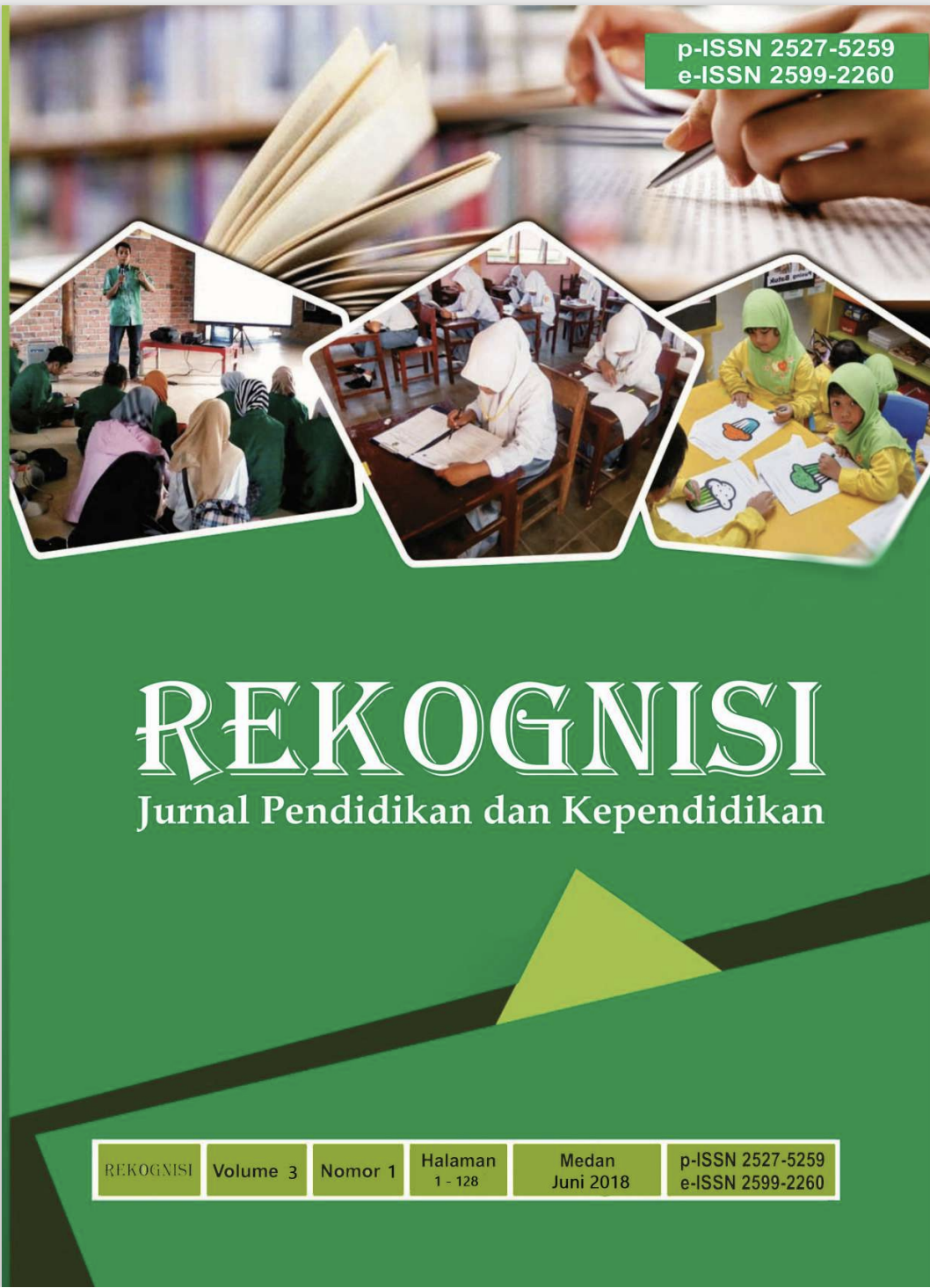DIFFERENCES IN MATHEMATICAL COMMUNICATION ABILITY BETWEEN STUDENTS WITH THINK-TALK-WRITE COOPERATIVE LEARNING AND DIRECT LEARNING
Keywords:
mathematical communication ability, think-talk-write type cooperative learning modelAbstract
The purpose of this research is to know: (1) differences in mathematical communication ability between students who are given cooperative learning model with Think-Talk-Write type and direct learning model, (2) describing the level of students' active activities during the Think-Talk-Write type cooperative learning process, (3) describing the process of completion of students’ answers on Think-Talk-Write type cooperative learning and the students who are given the direct learning. This research is semi experimental research. The population in this study is all students of seventh grade SMP Muhammadiyah 1 Medan consisting of 180 students which there are six parallel classes. The sample is chosen by using cluster random sampling consists of 60 people, 30 students of VII A class for Think-Talk-Write type cooperative learning model and 30 students of VII B class for direct learning model. Instruments used communication skill tests and students’ observation sheets. Data analysis used covariance analysis (ANACOVA). The result of this research shows that (1) there is difference of mathematical communication ability between the students who are given Think-Talk-Write type cooperative learning model and direct learning model. It can be seen from the result ANACOVA for Fcount = 43,72 > Ftabel = 4,21. The regression equation constant for the model between the students who were given the Think-Talk-Write type cooperative learning model, that is 9,89 is bigger than the direct learning model, that is 2,27, (2) the students' active activity level has met the ideal percentage time set, (3) the process of completion of students’ answers that learning by using the Think-Talk-Write type cooperative learning model better than the direct learning model.
References
Ansari, B. I. (2009). Komunikasi Matematis Konsep dan Aplikasi. Banda Aceh: Yayasan Pena.
Ester, R. (2007). Pengaruh Pembelajaran Kooperatif dengan Teknik Think-Pair-Square Terhadap Peningkatan Kemampuan Pemahaman dan Komunikasi Matematis Siswa SMK. Tesis. Medan. PPs UNIMED, Tidak diterbitkan.
NCTM (National Council of Teachers of Mathematics). (2000). Principles and Standards for School Mathematics. Reston, VA: NCTM.
Nuraina. (2013). Peningkatan Kemampuan Komunikasi dan Disposisi Matematis Siswa melalui Model Pembelajaran Kooperatif Tipe Teams-GamesTournaments (TGT) di Kelas VIII SMP Negeri 1 Gandapura Kabupaten Bireuen. Tesis tidak dipublikasikan. Medan: UNIMED Medan.
Pugalee, D.A. (2001). Using Communication to Develop Students Mathematical Literacy. Reston, VA: NCTM.
Sanjaya, W. (2006). Strategi Pembelajaran Berorientasi Standar Proses Pendidikan. Jakarta: Kencana Prenada Media.
Saragih, S. (2007). Mengembangkan Kemampuan Berpikir logis dan Komunikasi Matematis Siswa Sekolah Menengah Pertama Melalui Pendekatan Matematis Realistik. Bandung: Program Pascasarjana UPI Bandung.
Sumarmo, U. (2006). Pembelajaran Keterampilan Membaca Matematis pada Siswa Sekolah Menengah. Bandung: FMIPA UPI.
Trianto. (2009). Mendesain Model Pembelajaran Inovatif Progresif. Jakarta: Penerbit Kencana.


